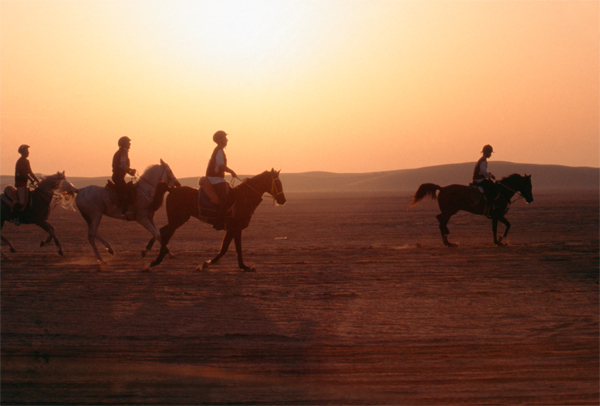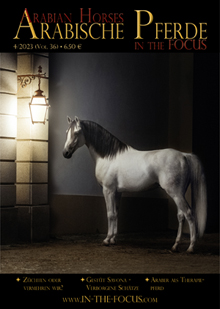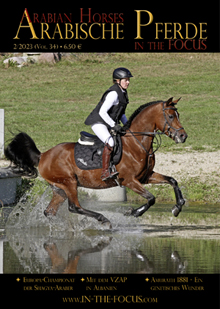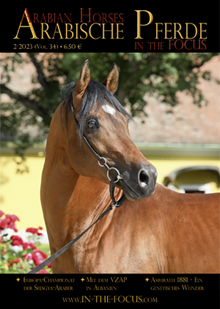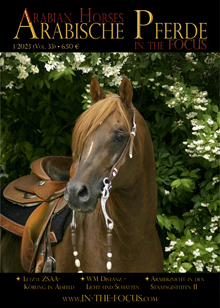What looked at first to be „just an accumulation of doping cases “, has developed into the biggest scandal in endurance riding, including mid-ride horse-swaps, bogus races for qualification, increasing number of doping cases and numerous dead horses on the track. If endurance shall survive, FEI and all endurance riders have to stand up against these practices, to save their sport.
To make one point quite clear at the beginning: I am personally a fan of endurance riding, because I believe it is one of the best equestrian sports. With varying ride lengths it offers something for everybody, from amateur to professional, it strengthens the bond between rider and horse, it provides a wonderful nature experience and comes closest to what our horses are made for – and last not least, endurance is especially suitable for the Arabian horse, who often excels at this discipline.
Horse-Swaps and Bogus-Races
Over the last couple of years, the “Group VII countries”, and in particular, the United Arab Emirates, have changed this sport into a tragedy. Suspected horse swaps took place already in 2011, when a horse from UAE looked suspiciously different at the start and at the finish, as documented by photos. More mid-horse swaps occurred in 2012, investigated by the FEI, but without any further action, as apparently there was not sufficient proof.
The most recent development are ‘bogus races’, endurance rides that are affiliated with the FEI, affiliation fee paid, proposals send in, but actually these rides never took place in real life, only on paper – including the fake results! One has to know that the results are entered into the FEI database by the National Equestrian Federations of each country. And actually, we have to be thankful that they were so bad in faking the results, as they took results of previous (real) races and simply copy / pasted them. A completion rate of around 90% arouse suspicion, while it usually is more like 35-40% (see table 1). Some of these ‘bogus races’, of which 12 or so were found so far, were qualifiers, among them for the Presidents Cup. It is not only unfair for your fellow competitors who have to go through the selection process in reality, it is especially unfair for the horses, who may not (yet) have the necessary experience, training, fitness and
health, etc., to actually be ready for a 160 km race across the desert.
For several years, the high number of doping cases was of concern to the horse loving community worldwide. And again, it is the UAE taking the inglorious lead: 30 doping cases since 2006, compared to 16 in the whole of Europe, while there were only 198 rides in UAE compared to 1056 FEI-rides in Europe. Yet, another reason for concern is the ever-increasing speed at these races, and indeed they are races, not rides. Table 1 shows, that the average speed of the winner of the 160 km CEI*** ride at Al Wathba in Abu Dhabi/UAE increased from 22 km/h to 27 km/h, i.e. by 23%.
Poor Splitters Creek Bundy
oth facts together, increased speed and doping to cover-up any lameness, inevitably leads to overuse and break-down of an increasing number of horses. And indeed, this was the fate of poor Splitters Creek Bundy who really brought the barrel to overflow. Bundy was a 12-year-old Partbred Arab from Australia, sold to the UAE in 2010. Prior to his exportation he had completed 6 x 80 km rides, 1 x 100 km ride, and the 2009 Tom Quilty Gold Cup ride of 160 km – one must assume, with such a record, that the horse was sound. Since his arrival in the UAE in 2010, he participated in 10 international rides (CEI) of 80-120 km and finishing five. His last ride then was the Al Reef Cup, a 120 km national ride in Abu Dhabi. Just near the end of the second loop he broke down with both forelegs broken. Dope tests revealed that he had a whole cocktail of painkillers in his blood, so no wonder he was not lame prior to his break-down. And although this happened at a national event, and as such not under the jurisdiction of the FEI, it was enough for FEI to take off the two remaining international meetings in the UAE from the FEI calendar. Poor Bundy is not an individual case, two more horses at the very same race died, and in total, there appear to be about 60 cases (or more) of broken bones by fatigue failure due to overuse per season.
Who else is to be blamed?
What I have just listed, is by far not all, but it’s enough to give you the picture. However, it is not only the Group VII countries that are to be blamed for the current plight. There are also FEI Officials, who turned a blind eye to what’s going on at the rides and did not enforce existing rules, there is the FEI itself, which – until recently presided by the wife of the worst doping offender in endurance – did not take any action. There are horse breeders who don’t mind selling their horses to the Middle East, knowing that life expectancy of an endurance horse there is only 1 to 2 years after importation. Guilty are all those, who are part of the machinery to satisfy the vanity of the sheiks.

What can be done?
So what can be done to resolve the situation?
Under the pressure of several National Equestrian Federations, the FEI has recently made some important, and long overdue decisions: On 12th March 2015 the “FEI has suspended the National Federation of the United Arab Emirates (UAE) for an indeterminate period following an investigation by the FEI into major horse welfare issues and non-compliance with FEI Rules and Regulations in the discipline of Endurance… Under the terms of the suspension, which has been imposed immediately, the UAE National Federation may not attend or be represented at any session or meeting of any body of the FEI, may not organise any international events, and its members cannot participate in any international events.” In December 2014, the FEI (under President Princess Haya Bint Al Hussein) decided that the FEI World Endurance Championships 2016 will be held in Dubai, but the FEI Website today (12.3.) indicates “allocation postponed”. These are important and correct steps to resolve the problem.
Other steps must be:
- to ban jockeys, i.e. riders have to have ridden a particular horse on a regular basis prior to any start at an international event;
- to alter the course of endurance rides in order to reduce speed and to make the ride a challenge on a more technical level;
- to send Officials for the respective rides that have been selected by the FEI;
- to ban any foreign riders to participate in national endurance rides in the UAE;
- to ban any UAE riders from FEI endurance rides;
- identification of horses at start, vetgates and finish by microchips;
- verifying results.
Only if we manage to isolate the offender, to ban him from the international platform and to punish him with disrespect, will he realise that all his money does not buy him what he seeks most: International attention.
Gudrun Waiditschka






